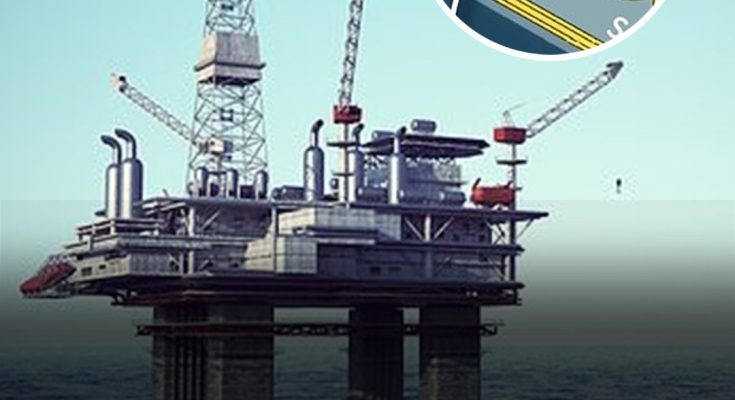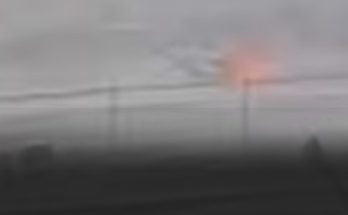A horror diving accident that saw a man completely ‘sucked through’ a tiny 24-inch hole could be one of the most brutal deaths recorded in history.
On November 5, 1983, an incident on the Byford Dolphin oil rig saw routine maintenance work end with five workers dying instantly and one escaping with lifechanging injuries.
A video, which has amassed 4.9 million views on YouTube, details how the men lost their lives while working on the oil rig in the North Sea near Norway after a sudden pressure change caused their bodies to be torn into a million pieces.
Roy Lucas, 38, Edwin Coward, 36, Truls Hellevik, 34 and Bjorn Giaever, 29, William Crammond, 33, and Martin Saunders, 30 were all working on the rig.
The extreme pressure saw three men’s bodies explode into a million pieces, one man crushed and another man sucked through a small hole causing his organs to come out of his body.
The team descended to a depth of 295 feet to complete their work and used a special chamber to transport workers called a diving bell. This connected to another a set of chambers where divers temporarily lived.
These chambers allowed the divers to change between high pressure underwater environment and pressurised living quarters.
When diving pressure increases as they descend deeper into the sea. However, the main risk comes not from descending to these high pressures but ascending from those depths.

On November 5, 1983, the Byford Dolphin incident shocked the offshore drilling industry, when routine maintenance work ended with workers dying instantly and one escaping with lifechanging injuries
That’s because increasing water pressure causes nitrogen and helium to dissolve into the bloodstream.
In the chambers, divers breathe a specialised mixture of gases typically helium and oxygen which is adjusted based on the depth of the dive.
But if the divers come back up too quickly the rapid pressure release leads to decompression sickness.
This causes the dissolved nitrogen in the bloodstream to become gas again forming nitrogen bubbles throughout the body.
Symptoms include nausea, dizziness, joint pain and in some cases, it can cause death.
The only prevention is to cautiously return to the surface to allow time for the nitrogen to diffuse naturally.
The team were set to spend up to 28 days in the cramped high-pressure chamber where they worked, ate and slept.
On the day of the horrific accident, Hellevik and Giaever had just completed 12 hours of maintenance work at a depth of 295 feet which has a high pressure.

In the chambers divers breathe a specialised mixture of gases – typically helium and oxygen – which is adjusted based on the depth of the dive. But if the divers come back up too quickly the rapid pressure release leads to decompression sickness

During the incident the pressure suddenly shifted from 9 atmospheres, the pressure of 297 feet below water, to just one atmosphere which is the air pressure at the surface
The diving tenders who controlled the air supply to the maintenance team while they were working had also been working for 12 hours.
Following their shift the team then ascended back to the surface using the diving bell ready for it to be reattached to the diving chambers.
Once through the door from the diving bell, the two divers shut the door and adjusted the pressure in the chamber to make sure it was sealed shut.
Usually they would then seal off the chamber and connect it to the dive bell before slowly depressurising it to keep the divers safe.
But on that day one of the divers outside the bell unlatched the diving bell before it had been depressurised. This open clamp meant that the chamber system suddenly shifted from the pressure of 297 feet below water to the air pressure on the surface.
The explosive rush of air out of the chamber sent the diving bell flying hitting Crammond and killing him and leaving Saunders partially crushed by 4000 kg diving bell.
Saunders’ lungs collapsed and he suffered fractures in his back and a broken neck. But he was the only one to survive — the fate of the other divers was much worse.
The pressure change tore through the living chamber yanking Hellaevik, who was stood next to the chamber door, off his feet.
It’s thought the sudden decompression gave them an instant and painless death, according to YouTube channel Storified, which detailed the incident.
Three divers Lucus, Coward and Giaever, who were resting before their shift, died instantly.
The change in pressure caused their blood to ‘boil’ as dissolved nitrogen returned to a gas state fat accumulated and solidified in their arteries, veins, hearts and liver and their bodies were scattered throughout the chamber.
But Hellevik suffered the worst death because he was closest to the connecting door which was not fully closed. He was forced through a 24-inch (60.9 cm) gap with a force of 25 tons and his organs burst out of his body.
It is not fully understood why the incident happened but it highlighted shortcomings in safety and the need for advancements in diving technology.



